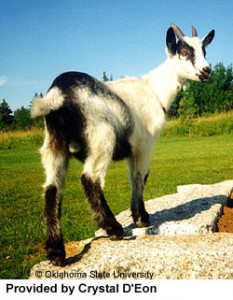How To Make Glazed Pears with Cinnamon Goat Milk Sauce, Brandy Snaps and Banana ice-cream – Popular Gourmet Dessert Recipe
This is an impressive dessert. The recipe enable you to make your own brandy snap baskets and fills them with homemade banana ice cream in this impressive dessert. The recipe requires more than 2 hours preparation time, 1-2 hours cooking time, and can serves 4.
Ingredients:
For the banana ice cream
- 4 bananas, peeled, cut into chunks
- ¼ tsp vanilla essence
- 3-4 tbsp caster sugar
- 150ml/5fl oz buttermilk
For the glazed pears
- 400ml/14fl oz water
- 110g/4oz caster sugar
- 2 cinnamon sticks
- 1 lemon, juice only
- 4 small pears, peeled
- 4-5 tbsp icing sugar
For the cinnamon goat milk sauce
- 600ml/1 pint 2fl oz goat’s milk
- 200g/7oz caster sugar
- 75g/3oz golden syrup
- 2 cinnamon sticks
- 1 tsp baking powder
For the brandy snaps
- 50g/2oz soft dark brown sugar
- 40g/1½oz golden syrup
- 50g/2oz butter
- 40g/1½oz plain flour, plus extra for dusting
- 1 tsp ground ginger
To serve
- 12 sprigs fresh redcurrants
- 12 sprigs fresh mint
Directions:
- For the banana ice cream, the night (or at least a few hours) before you want to eat the ice cream, tip the pieces of banana into a freezer bag or arrange them on a baking tray and freeze until solid.
- Once frozen, tip the banana into a food processor. Add the vanilla, sugar and half of the buttermilk and blend until well combined.
- With the motor still running, pour in the remaining buttermilk in a thin steady stream. Continue to blend the mixture until all of the buttermilk has been added and the mixture is smooth and creamy. Freeze until needed.
- For the glazed pears, bring the water, sugar, cinnamon sticks and lemon juice to a simmer in a non-reactive saucepan. Add the pears and continue to simmer for 10-12 minutes, or until just tender.
- Remove the pears from the poaching liquid using a slotted spoon and pat dry with kitchen paper. Reserve the poaching liquid.
- Cut the poached pears horizontally into slices to create circles about 0.5cm/¼in thick. Pat dry once more. Set aside until ready to serve.
- For the cinnamon goats milk sauce, bring the goats’ milk, sugar and golden syrup to the boil in a saucepan.
- Crumble the cinnamon sticks into the mixture and stir in the baking powder. Remove the mixture from the heat straight away as the baking powder will make the mixture bubble up.
- Whisk the sauce until the bubbling subsides, then return the pan to the heat and cook the mixture over a gentle heat, whisking continuously, until the sauce is simmering.
- Continue to simmer the sauce over a low heat for 45 minutes, or until thickened and golden in color. Strain before serving to remove the pieces of cinnamon.
- Meanwhile, for the brandy snaps, preheat the oven to 180C/350F/Gas 4.
- Melt the sugar, golden syrup and butter in a saucepan, then remove the pan from the heat.
- Add the flour and ground ginger and mix well to form a thick paste.
- Turn out the brandy snap paste onto a work surface lined with cling film. Roll the mixture into a ball, then cover in the cling film and chill in the fridge until set, about 30 minutes.
- Remove the chilled brandy snap dough from the fridge and roll walnut-sized balls from it using your hands. You should get at least four from this mixture.
- Dust a work surface with flour. Roll each ball of dough out into a disc about 2mm thick, then place the discs onto a baking sheet.
- Bake the brandy snaps in the oven for 6-8 minutes, or until crisp and golden-brown. Remove from the oven and set aside to cool for about 1 minute.
- Carefully lift each brandy snap off the tray and rest over an upturned glass or mug. Press the overhanging edges down gently against the sides of the glass to mould the brandy snaps into baskets. Set aside to cool for a couple of minutes, then lift them off the glass and set aside to cool completely. Repeat the process with all of the brandy snaps (it is best to mould the brandy snaps around several glasses at the same time while they are all still hot).
- Just before serving, dust the poached pear slices with icing sugar and heat using a chefs’ blow torch until the sugar has caramelized. Alternatively, preheat the grill to its highest setting and grill the pears until caramelized.
- To serve, arrange five slices of glazed pears in a circle on each serving plate. Place one of the brandy snap baskets in the centre of the circle and fill with a scoop of the banana ice cream. Spoon the cinnamon sauce over the pears and garnish with a few sprigs of redcurrants and mint.
More topics for you;
More best gourmet recipes for you.
Wondershare Recoverit Data Recovery

